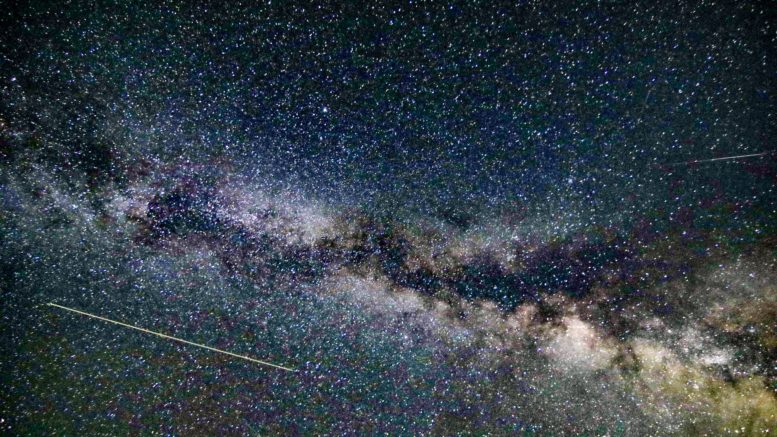Summer can always be a fun time in the Pacific Northwest with the plethora of outdoor activities and wonderful weather. With the shorter nights and longer days, there are certainly more clear nights to go outside and view the sky! This means one can take the extended daytime to go and enjoy an area that they have already been to and then stargaze, or go visit a new astronomy site that we recommend as part of our However, with the limited number of opportunities, we will provide our recommendations for the Top 5 Most Reliable Summer Astronomical Targets to look forward to!
These are not an exhaustive list, but rather a starting point for those getting started looking at the nigh sky and provide a challenge for astronomers at every level of observing. We have taken the time to include in this list objects for those who are utilizing a wide variety of gear, whether it be the naked eye, binoculars, telescopes, and astrophotography. If you are looking for a more advanced list of some summer astrophotography targets or astrophotography basics or unique astronomy sites, check out the resources that we have provided. Note, that this goes from the technical dates for spring start at the Summer Equinox and end at the September Equinox. Some might consider events before the Summer Equinox as part of Summer, but we will consider that as technically part of Spring.
- Return Of The Milky Way
Although the Milky Way can be seen in the later Spring months such as May in the Pacific Northwest, the fully beauty and best times to view the Milky Way is in the summer! June, July, and August provide amazing opportunities to view the Milky Way in its beauty! Plus, there is some time in the beginning of September to see the trail end of the Milky Way!
To view the Milky Way, the best places to go would be places that are far away from cities and lights of all kind, which can be found and places we have identified in the Unique Astronomy Sites Map. Viewing the Milky Way doesn’t require anything more than a clear view of the heavens, as photographing the Milky Way simply requires a camera with a tripod, wide enough aperture lens, and the ability to have the shutter stay open for 15-30 seconds. For more advanced photography of the Milky Way, one would track the Milky Way across the sky using either a tracking mount in some form and then processing of the individual images. - Return Of Planets Saturn, Jupiter, and Mars
It is during the summer that the planets of Saturn, Jupiter, and Mars take center stage in the nights sky. Although these are not the only objects to see in the nights sky, as there are a plethora of galaxies and the Milky Way to view, these planets are always fun for new astronomers and kids to view for the first time. It is always a sign that summer astronomy has arrived when Jupiter, Saturn, and Mars can be seen!
These planets are easy to spot with the naked eye, view some detail with binoculars, and capture detail with telescopes. Although small telescopes with under 6 inches of size won’t make the planets look super large, there will be great detail such as the rings of Saturn, the Red Spot of Jupiter, and some of the moons of Jupiter. - Summer Triangle
The Summer Triangle is a popularly known pattern or group of stars that can be seen in the night sky in the northern celestial hemisphere to help astronomers find other objects in the sky. During the Pacific Northwest summer nights, the stars that makeup the summer triangle appear virtually overhead and help guide astronomers to other celestial objects. The stars that make up the Summer Triangle are Altair, Deneb, and Lyra. - Albireo
This system is a double star that is the fifth-brightest light in the Cygnus constellation. The Albireo Double Star is visible to the naked eye as a single star with the visibility of magnitude 3, when viewed through a telescope, Albireo can be seen as 2 separate stars. The star that appears more bright yellow contrasts nicely with the other star which is a faint blue color. Seeing this double star is always a favorite and a sign that summer has arrived! - Meteor Showers
The summer treats the summer astronomers with 2 major meteor showers every year. The first of which is the Delta Aquirids Meteor Shower, which runs from July 12th to August 23rd with production peaking with up to 20 meteors per hour which can radiate from the constellation Aquarius. The other meteor shower is one of the most famous and best meteor showers to observe, which is the Perseids Meteor Shower. Producing up to 60 meteors at peak rate, this meteor shower runs from July 17th to August 24th with meteors radiating from the constellation Perseus.
There are many science centers and astronomy clubs that put on events for the Perseids, so plan to get to your observing site early! But that is because these meteor showers are great opportunities for viewing meteors with the naked eye and take wide angle photograph of the entire sky that can capture meteors. These are definitely a family favorite and fun activities for astronomers of all levels.
Now that you are aware of some of the most reliable summer astronomical targets that return year after year, stay safe and get out there and start observing!

Be the first to comment on "Top 5 Most Reliable Summer Astronomical Targets"